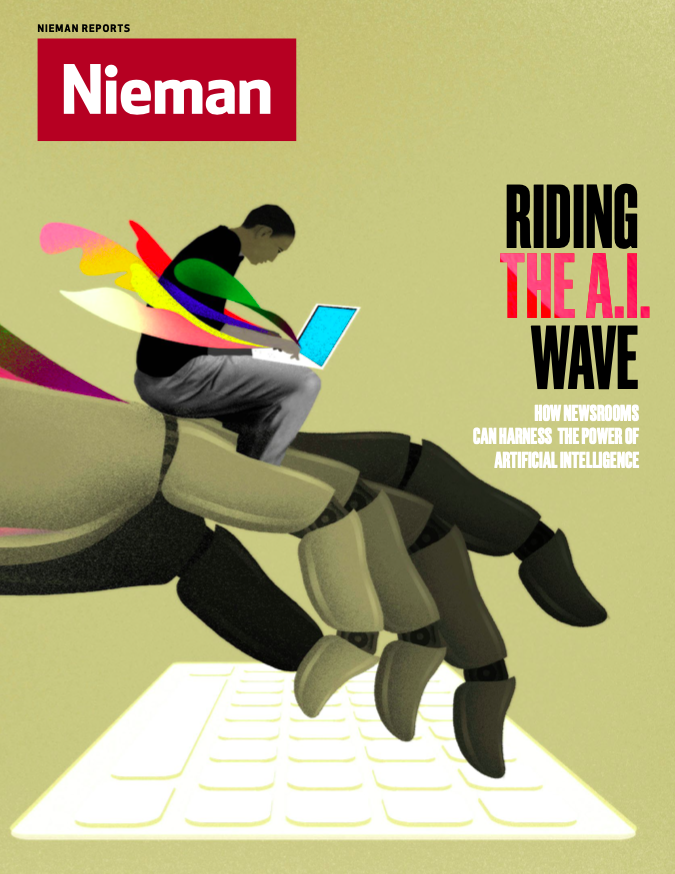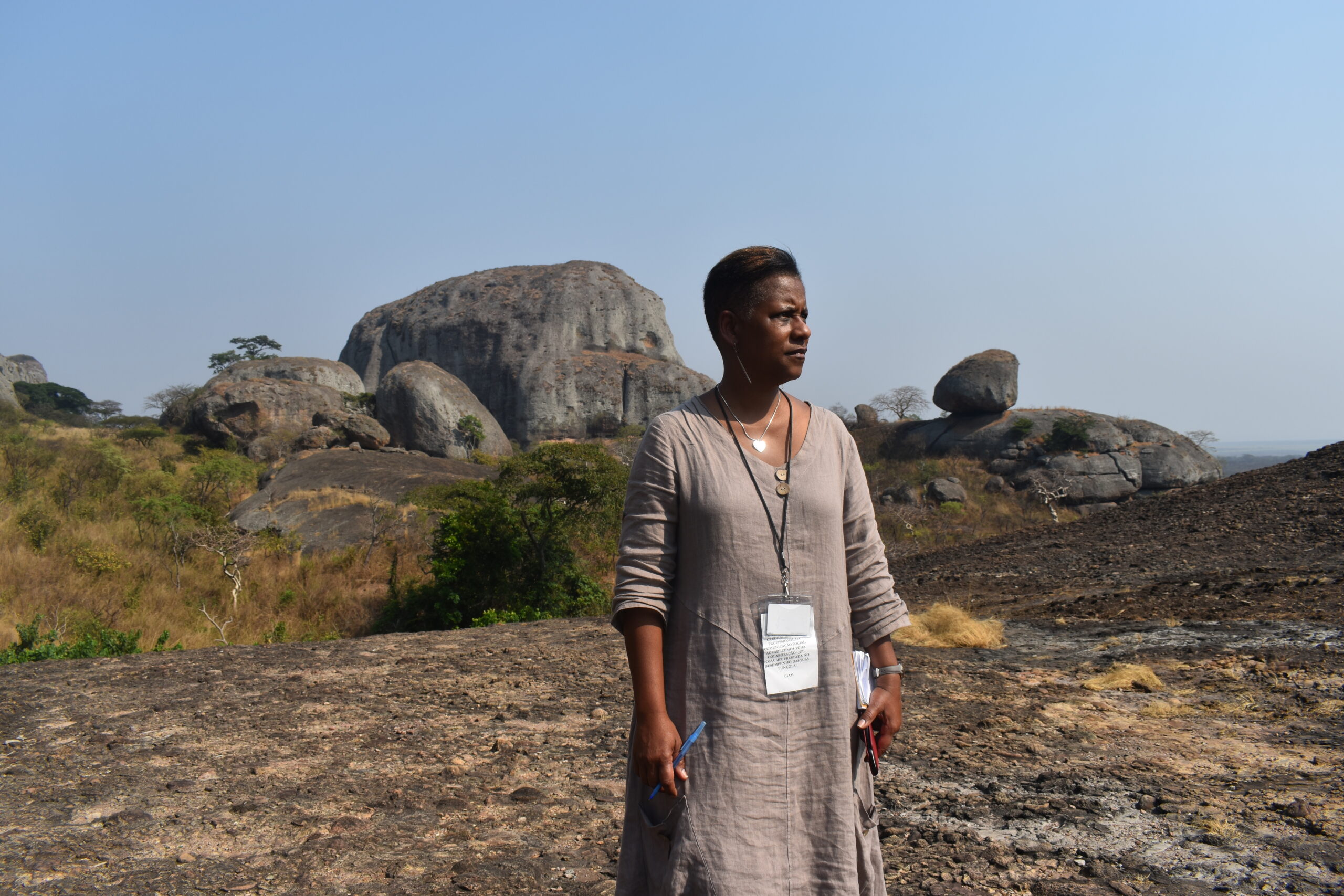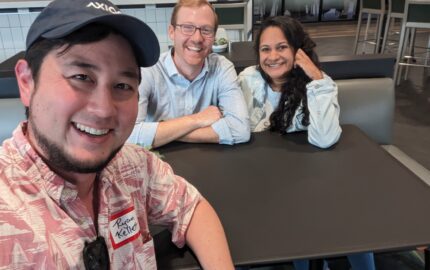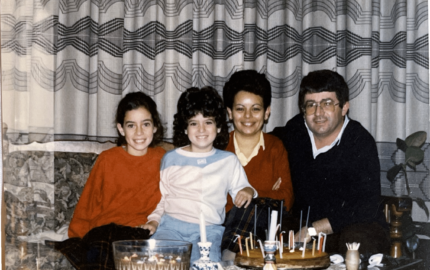
From image generators like DALL-E to the chatbot ChatGPT, artificial intelligence has experienced a boom recently — and journalists are beginning to grapple with what its new popularity will mean for the profession.
While some have shared concerns that AI would replace human writers and riddle the internet with plagiarism and misinformation, Nieman Reports’ Summer 2023 issue spotlights the ways newsrooms are using AI to bolster their work. Because they can translate stories into multiple languages and send personalized newsletters to subscribers in a fraction of the time it would take a human, AI has allowed publications to expand their reach, better engage their audiences, and free up journalists’ time to focus more on their reporting.
The trip to Angola was an indelible journey. It wasn’t the first time I had traveled to Africa, but this trip was different.
I was there as a journalist. I was there on a mission. It wasn’t about me taking a pilgrimage like my first trip to the Motherland. It was about telling our story — the African American story, the American story — the best I could.
It also helped make clear why I do what I do, what drives me to tell stories of the often overlooked.
It was 2019, and I was pulled into working on USA Today’s project marking the 400th anniversary of the first enslaved Africans brought to the English colonies in 1619 in what would become the United States. It made sense. In my decades of doing journalism, I had written much about communities of color, about people who don’t always have a voice.
We weren’t the only news organization writing about 1619. But we did something different. Our editors sent a team to Angola, to where thatslave ship came from.
In addition to me, there was photographer Jarrad Henderson, editor Nichelle Smith, our in-house expert on everything Black history, Kelley Benham French, a features editor, and Wanda Tucker, whose family members believe they are descendants of those first Africans brought to the English colony.
Our task was to chronicle Wanda’s journey in search of her ancestor’s path.
That Angola trip took my passion for journalism to another level. I walked where enslaved Africans would have walked. Visited villages where they would have lived. I learned you can be more connected to a story than you know. I had roots there — and with Wanda.
While I’ve covered everything from sports to national politics to oil spills, my passion, what drives me, was — is — writing about marginalized communities, shining a light on the wrongs, and sometimes the rights, happening to them. But I learned early in my journalism career that often I would be one of a few people of color in the newsroom.
When I landed my first job at the Star Democrat, a small newspaper on the eastern shore of Maryland, in the mid-1980s I was only the second Black reporter to work there. At the next job there were still few Black reporters. Same with the next job and the next. I had come to expect it but never got used to it. I used to wonder how Black journalists before me, especially the women, braved these all-white, mostly male newsrooms during Jim Crow. I have much respect for those who paved the way.
It matters that people of color are in newsrooms. I wrote early on about how experts predicted communities of color would be disproportionately impacted by Covid-19. I hated that that story was right.
Then came the murder of George Floyd and another vicious cycle of writing about injustices. I was angry — still am. I wrote about some of these same issues 10 years ago, 20 years ago, 30 years ago. And there are still plenty more disparities and injustices to write about.
Last year came an opportunity to pitch a passion civil rights project.
For years, I’ve interviewed civil rights veterans about their work in the 1960s — powerful stories about trying to register Black voters in hostile communities, about trying to eat at restaurants, about trying to send their kids to better equipped schools. They’d talk about being beaten and jailed and learning activists had been killed. It was dangerous. Still, they did it. As years passed, they were dying off.
In 2021, editors at USA Today put resources behind the civil rights project “Seven Days of 1961” — graphics, photo, video, podcast, and even the augmented reality team, which created an app that took viewers on one of the Freedom Rider buses. Reporters, including me, and photographer Jasper Colt spent months talking to veterans at the courthouse, the jail, the lunch counter where they protested 60 years ago. Some veterans died while the project was underway.
I was moved when a friend, Wiley Hall, emailed: “Journalism is the first draft of history. You and your colleagues at USA TODAY are showing that good journalism can do the rewrites too, when the first couple of drafts get it wrong.”
I’m still one of a few people of color in the newsroom, but I’m still excited about what I do. And it’s not lost on me that this Black woman, a descendant of enslaved people, is a Nieman Fellow at Harvard. I will continue to use my platform.
It can be lonely sometimes, especially if you have to fight for a story, fight to make sure other views are included, fight to push back against stereotypes, fight to make sure a story is done right — or, hell, done at all. It also matters that everyone in the newsroom includes diverse voices in their stories and cover communities of color.
That’s one way for journalists to get the story of race in America right.



